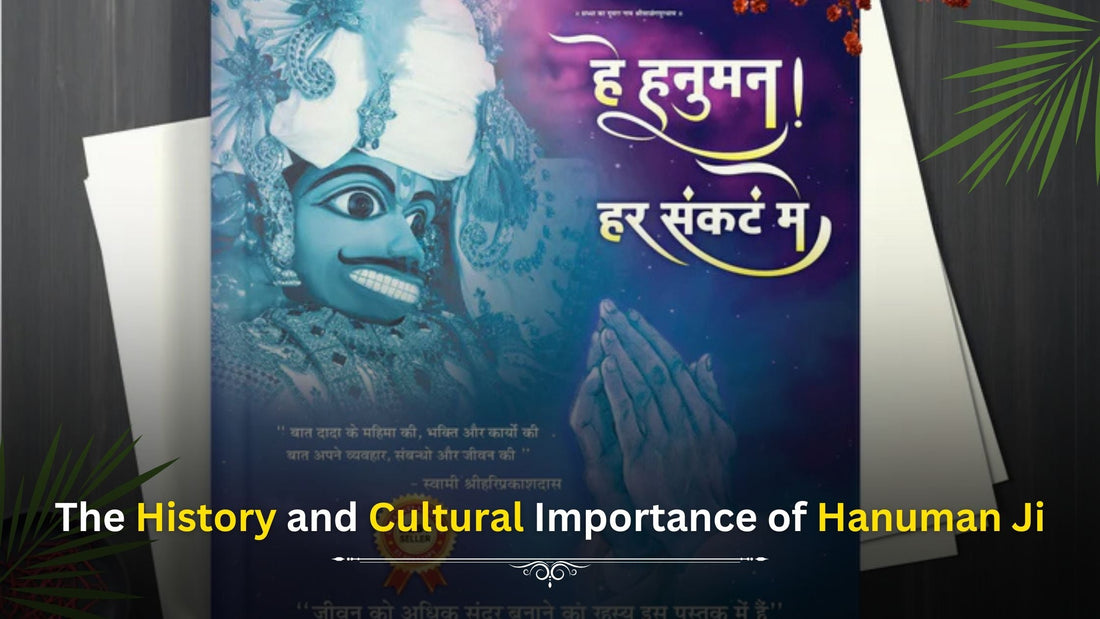
The History and Cultural Importance of Hanuman Ji
Share
The History and Cultural Importance of Hanuman Ji
Introduction: Lord Hanuman, also known as Bajrangbali, is one of the most revered deities in Hindu culture. Known for his immense strength, unwavering devotion, and boundless wisdom, Hanuman Ji plays a significant role in Hindu mythology and spiritual practices. In this blog, we will explore the rich history and cultural importance of Hanuman Ji, delving into his legendary tales, symbolic significance, and enduring influence on devotees.
1. The Birth and Early Life of Hanuman Ji
Origins: Hanuman Ji is believed to be the son of the wind god Vayu and Anjana, a celestial nymph. His birth is considered a divine blessing, and he is often depicted as a powerful monkey god with immense strength and agility.
Key Event: One of the most famous stories from Hanuman Ji's childhood is his attempt to eat the sun, mistaking it for a ripe fruit. This incident showcases his incredible strength and playful nature.
2. Hanuman Ji in the Ramayana
Role in the Epic: Hanuman Ji is a central figure in the Ramayana, one of the greatest epics in Hindu literature. He is a devoted disciple of Lord Rama and plays a crucial role in the quest to rescue Sita from the demon king Ravana.
Key Contributions:
Finding Sita: Hanuman Ji's journey to Lanka to locate Sita is a testament to his devotion and bravery.
Burning Lanka: Using his divine powers, Hanuman Ji sets the city of Lanka on fire, creating chaos among the demons.
Lifting the Mountain: Hanuman Ji's legendary feat of lifting the Dronagiri mountain to bring the life-saving Sanjeevani herb for Lakshmana highlights his strength and dedication.
3. Symbolism and Attributes of Hanuman Ji
Attributes: Hanuman Ji is often depicted with a mace (gada) and a lotus, symbolizing his strength and devotion. His monkey form represents humility and selfless service.
Symbolic Significance:
Devotion (Bhakti): Hanuman Ji's unwavering devotion to Lord Rama is a model of selfless love and dedication.
Courage and Strength: His incredible feats of strength and bravery inspire devotees to overcome obstacles in their own lives.
Wisdom and Knowledge: Hanuman Ji is also revered as a symbol of wisdom and knowledge, guiding devotees on the path of righteousness.
4. Hanuman Ji in Modern Worship
Temples and Shrines: Numerous temples dedicated to Hanuman Ji can be found across India and beyond. These sacred spaces attract devotees seeking his blessings for strength, protection, and prosperity.
Festivals:
Hanuman Jayanti: Celebrated to mark the birth of Hanuman Ji, this festival is observed with great fervor and devotion. Devotees offer prayers, chant Hanuman Chalisa, and perform various rituals to honor the deity.
Tuesdays and Saturdays: These days are considered auspicious for worshiping Hanuman Ji. Devotees often visit temples, recite hymns, and observe fasts.
5. The Enduring Legacy of Hanuman Ji
Cultural Impact: Hanuman Ji's influence extends beyond religious practices. He is a cultural icon, inspiring art, literature, and performing arts. Stories of his bravery and devotion are passed down through generations, reinforcing his timeless appeal.
Modern Relevance: In today's world, Hanuman Ji's qualities of strength, loyalty, and wisdom continue to resonate with people from all walks of life. His teachings and stories provide valuable lessons on resilience, compassion, and the importance of unwavering faith.
Conclusion: The history and cultural importance of Hanuman Ji are deeply embedded in Hindu tradition and spirituality. His legendary tales, symbolic attributes, and enduring legacy make him a beloved deity for millions of devotees. By honoring Hanuman Ji, we can draw inspiration from his divine qualities and strive to embody his values in our daily lives.
For those seeking a deeper connection with Hanuman Ji, consider exploring the book "He Hanumant Har Sankat Me (Hindi)" available at Prabhu Prasad. This book offers profound insights and practical guidance to invoke the blessings of Hanuman Ji and find strength in challenging times.
